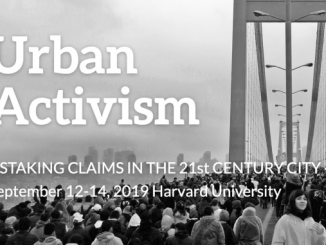
A conference on urban research and activism in the US
From September 12 to 14 a conference on urban activism in Harvard will debate on the links between urban struggles and research activities.

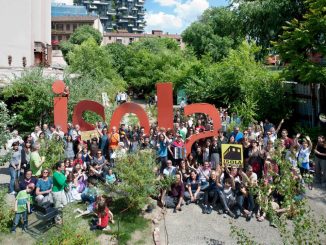

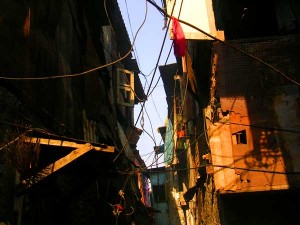 Who is not frightened by the idea of the unstoppable growth of cities in Asia and in the former "third world", or by the perspective (apocalyptical, though critically framed) of moving towards a planet of slums? But in the places closer to this phenomenon - for example in the popular neighborhoods of Mumbai, India - the idea of slum has been criticized since many decades. These urban zones that don't even deserve being called neighborhoods, always presented towards the exterior as marked by lacks (of hygiene, of safety, of integration, of control, even of morality), under a deeper scrutiny reveal histories and dynamics complex and functional, that had been interpreted in various forms according to the different theories. Based in an office in Dharavi-Koliwada (the enormous neighborhood popularized by Slumdog millionaire), the two urban activists Matias ECHANOVE and Rahul SRIVASTAVA (from Urbz collective) show how a series of spontaneous social structures, internal to the so-called slums, cause a constant improvement and development, often obstructed by local authorities or by urban reform plans. In territories as thick and reticular as forests of mangroves, the only valid ways to development are those generated by their very users: homegrown, as the neighborhoods themselves.
Who is not frightened by the idea of the unstoppable growth of cities in Asia and in the former "third world", or by the perspective (apocalyptical, though critically framed) of moving towards a planet of slums? But in the places closer to this phenomenon - for example in the popular neighborhoods of Mumbai, India - the idea of slum has been criticized since many decades. These urban zones that don't even deserve being called neighborhoods, always presented towards the exterior as marked by lacks (of hygiene, of safety, of integration, of control, even of morality), under a deeper scrutiny reveal histories and dynamics complex and functional, that had been interpreted in various forms according to the different theories. Based in an office in Dharavi-Koliwada (the enormous neighborhood popularized by Slumdog millionaire), the two urban activists Matias ECHANOVE and Rahul SRIVASTAVA (from Urbz collective) show how a series of spontaneous social structures, internal to the so-called slums, cause a constant improvement and development, often obstructed by local authorities or by urban reform plans. In territories as thick and reticular as forests of mangroves, the only valid ways to development are those generated by their very users: homegrown, as the neighborhoods themselves. 
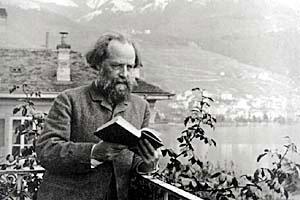 The suburbs, according to the anarchist geographer Elisée Reclús (1830-1905), are not places of exclusion in which are confined those who can't afford to live in the city center. On the contrary, the margins, the periphery, were for him the ideal spaces to develop ways of life closer to nature, without losing the relationship with the hustle and bustle of the city (Reclús had been involved in Paris Commune), but out of the insane density of the metropolis. Reclús lived the last half of his adult life in the suburbs, claiming the last urban fringes as places that permit to break the gap between nature and the city; a central problem for the geographers and urbanists of his time, especially the ecologists and anarchists (Patrick Geddes, Lewis Mumford and, in Catalonia, Cebrià de Montoliu).
The suburbs, according to the anarchist geographer Elisée Reclús (1830-1905), are not places of exclusion in which are confined those who can't afford to live in the city center. On the contrary, the margins, the periphery, were for him the ideal spaces to develop ways of life closer to nature, without losing the relationship with the hustle and bustle of the city (Reclús had been involved in Paris Commune), but out of the insane density of the metropolis. Reclús lived the last half of his adult life in the suburbs, claiming the last urban fringes as places that permit to break the gap between nature and the city; a central problem for the geographers and urbanists of his time, especially the ecologists and anarchists (Patrick Geddes, Lewis Mumford and, in Catalonia, Cebrià de Montoliu). 
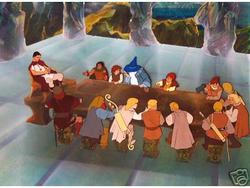 Our first workshop was on september 15th in the University of Barcelona: we plan to meet on the last thursday of every month, to share projects and reflections on the city and urban space, key issues in contemporary anthropology produced in the catalan capital. Participants in the workshop include: Omar Borrás,who is working on football among Cochabamba's immigrants in Barcelona; Andres Antebi, who is involved in a visual anthropology project on a small public square in Tangiers; Ariadna Mestre who studies Barcelona's Forat de la Vergonya as a theatralized space; Caterina Borelli who, after researching urban renewal of Raval, is now researching in Sarajevo; Marco Stanchieriwho works on the transformation of Vallcarca neighborhood; Muna Makhluffwho is doing her fieldwork in Barceloneta; Alba Marina who studies the nomadic network of "Salsa brava" in Barcelona; Miguel Fernández researching on the application of "civism" in Raval's calle Robadors; Marc Dalmau who focused on the impact of urban change of the Colonia Castells over the lifestyle of its inhabitants; and, obviously, Manuel Delgado for coordination and repression.
Our first workshop was on september 15th in the University of Barcelona: we plan to meet on the last thursday of every month, to share projects and reflections on the city and urban space, key issues in contemporary anthropology produced in the catalan capital. Participants in the workshop include: Omar Borrás,who is working on football among Cochabamba's immigrants in Barcelona; Andres Antebi, who is involved in a visual anthropology project on a small public square in Tangiers; Ariadna Mestre who studies Barcelona's Forat de la Vergonya as a theatralized space; Caterina Borelli who, after researching urban renewal of Raval, is now researching in Sarajevo; Marco Stanchieriwho works on the transformation of Vallcarca neighborhood; Muna Makhluffwho is doing her fieldwork in Barceloneta; Alba Marina who studies the nomadic network of "Salsa brava" in Barcelona; Miguel Fernández researching on the application of "civism" in Raval's calle Robadors; Marc Dalmau who focused on the impact of urban change of the Colonia Castells over the lifestyle of its inhabitants; and, obviously, Manuel Delgado for coordination and repression. 
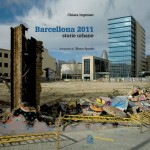 These two freshly published books by Chiara Ingrosso provide new insights on Barcelona's urban and architectural history: the first analizes the city transformations from Franco's dictatorship to future urban plans; the second draws a route around four neighborhoods, Barceloneta, Poblenou, La Mina and Bon Pastor. Both of them are illustrated with Mario Spada photographies, and, as a whole, they show the catalan capital very different as how it is usually represented in Europe and in the whole world, underlining its several dark sides.
These two freshly published books by Chiara Ingrosso provide new insights on Barcelona's urban and architectural history: the first analizes the city transformations from Franco's dictatorship to future urban plans; the second draws a route around four neighborhoods, Barceloneta, Poblenou, La Mina and Bon Pastor. Both of them are illustrated with Mario Spada photographies, and, as a whole, they show the catalan capital very different as how it is usually represented in Europe and in the whole world, underlining its several dark sides.
Copyright © 2024 | WordPress Theme by MH Themes